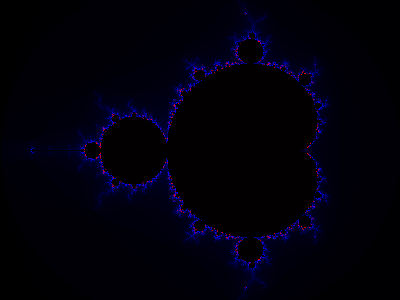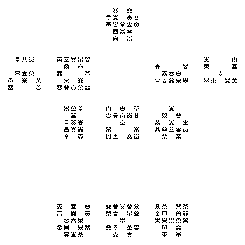Source: Fractal Art
Part 1: Start with an input image made of
.and#pixels. Forniterations, break the image into blocks:
- If the current size is even, break the image into 2x2 chunks and replace each with a 3x3 chunk
- If the current size is odd, break the image into 3x3 chunks and replace each with a 4x4 chunk
The replacement rules will be specified in the following format (example is a 3x3 -> 4x4 rule):
.#./..#/### => #..#/..../..../#..#In that example, replace this:
.#. ..# ###With this:
#..# .... .... #..#Any rotation or reflection of a chunk can be used to match the input of a replacement rule.
After
n = 18iterations, how many#pixels are there?








